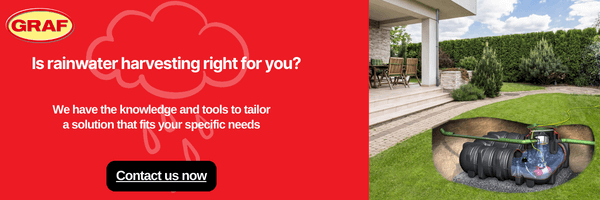Difference Between Greywater Recycling & Rainwater Harvesting?
As the world's population rises and climate change affects water resources, water conservation and sustainable water management are becoming increasingly crucial. Reusing water is one technique to cut usage and conserve this valuable resource. Greywater recycling and rainwater harvesting are the two main methods for reusing water.
What is greywater recycling?
Greywater recycling is the treatment and reuse of wastewater from sources other than toilets, such as sinks, showers, and washing machines. Greywater varies from blackwater, which is a more severely contaminated effluent from toilets and kitchen sinks. Greywater can be treated and used for non-potable applications like irrigation or toilet flushing. Greywater recycling systems are classified into three types: biological systems, membrane systems, and disinfection systems. Solids and pollutants are often removed through filtration and disinfection using chemicals, UV radiation, or other means.
Greywater recycling has several advantages, including reduced water usage and wastewater output, which can help save water resources and ease the load on municipal water treatment plants. Greywater recycling can also provide a local source of irrigation water, lowering the demand for potable water.
What is rainwater harvesting?
The technique of collecting and storing rainwater for later use is known as rainwater harvesting. Rainwater harvesting, unlike greywater recycling, does not entail the treatment of wastewater but rather the collection of rainwater before it enters the municipal stormwater system or groundwater.
Rainwater harvesting systems are classified into three types: rooftop catchment systems, surface runoff systems, and underground storage systems. If appropriately processed, collected rainwater can be used for non-potable purposes such as irrigation, toilet flushing, and laundry.
Rainwater harvesting has several advantages, including reducing demand on municipal water sources, especially during times of drought or scarcity, and reducing stormwater runoff, which can help mitigate flooding and erosion. It can also be used for irrigation, reducing the demand for potable water. The necessity for frequent maintenance to prevent contamination, as well as any regulatory or legal concerns relating to water rights and water quality requirements, are potential downsides or limits.
Generally, rainwater harvesting is a sustainable and cost-effective technique to conserve water resources, particularly in dry or expensive places.
The main differences
Greywater recycling and rainwater harvesting are both efficient methods of reusing water and lowering demand on municipal water sources. Yet, there are numerous significant distinctions between the two strategies that may influence their applicability in various scenarios.
Greywater often has a lower quality than rainwater since it may contain impurities such as soap, detergents, and bacteria. Greywater requires more substantial treatment to be appropriate for reuse, whereas rainfall can often be used for non-potable uses without treatment.
In comparison to greywater recycling, which is based on how much wastewater a household produces, rainwater harvesting frequently depends more on local rainfall patterns and roof size. At times of severe rainfall, however, rainwater harvesting can offer more water than greywater recycling.
Things to consider
The local climate and rainfall patterns, the availability of water resources, and municipal laws governing the use of reclaimed water will all play a role in the decision between greywater recycling and rainwater harvesting. When determining which strategy to use, homeowners and businesses should carefully examine these issues.
In general, both greywater recycling and rainwater harvesting are excellent strategies for reducing water use and conserving water resources, and the user's particular needs and circumstances will determine which strategy to use.


